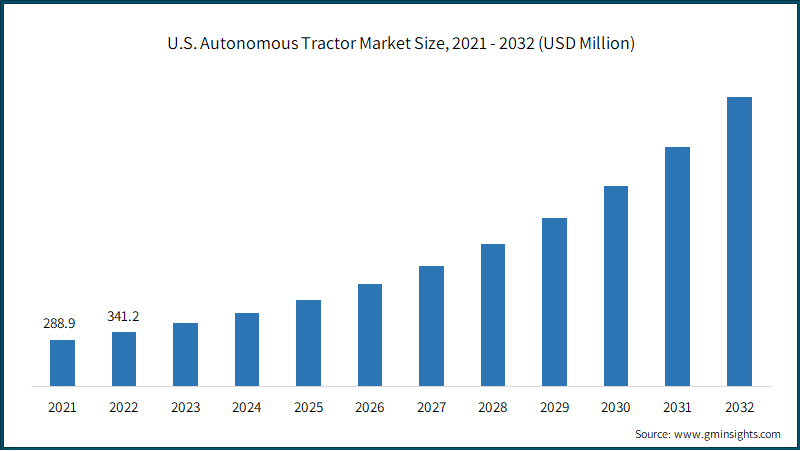Home > Agriculture > Agri Machinery & Tech > Agri Equipment > Autonomous Tractors Market
Autonomous Tractors Market Analysis
- Report ID: GMI6657
- Published Date: Sep 2023
- Report Format: PDF
Autonomous Tractors Market Analysis
The autonomous tractors market from sensor-based segment dominated around USD 700 million revenue in 2022, due to rising autonomy kit deployments. These kits, which often include advanced sensors such as LiDAR, radar & cameras, enable traditional tractors to become autonomous. For instance, in March 2023, Ouster, Inc., a prominent supplier of high-performance LiDAR sensors, and Fieldin, a leading AgTech firm specializing in smart farming solutions & autonomous technology, jointly revealed the most extensive retrofit autonomy kit deployment ever seen in the agricultural sector. Consequently, the synergy between autonomy kits and sensors propels the advancement of autonomous tractor technology.

The semi-autonomous segment held over 67.10% of the autonomous tractor market share in 2022. The detection of obstacles based on both geometric and non-geometric properties is a significant factor driving semi-autonomous automation in the market. By combining geometric data from sensors such as LiDAR & radar with non-geometric data from cameras and AI algorithms, tractors can accurately perceive and respond to their surroundings. This advanced obstacle detection capability enhances safety and allows tractors to navigate complex & dynamic environments, thus increasing their autonomy and usability, which in turn, boosts product adoption and effectiveness in various agricultural applications.

North America autonomous tractors market accounted for 25% of revenue share in 2022 and will cross USD 2 billion in 2032. Exclusive research and development initiatives, coupled with innovative technology, are propelling the market demand. Leading manufacturers in the region invest heavily in research & development to develop cutting-edge autonomous systems. Advanced technologies, such as AI-driven precision farming, sensor fusion, and real-time data analytics, are also integrated into these tractors. This commitment to innovation enhances tractor capabilities, improves productivity, and addresses labor challenges, reinforcing North America's position as a hub for autonomous tractor adoption & development.

